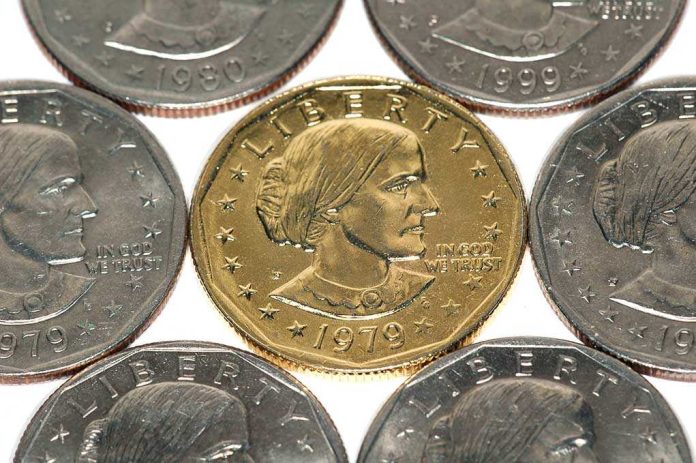
America’s smallest coin is vanishing, and with it, a centuries-old symbol of thrift—and the ripple effects may surprise you more than the penny ever did.
Story Snapshot
- The U.S. Treasury is halting penny production after over 230 years, citing unsustainable costs.
- Pennies remain legal tender, but will gradually disappear as banks and retailers exhaust supplies.
- Cash transactions will round to the nearest nickel, changing daily commerce for millions.
- The phase-out reflects broader shifts in payment habits, government efficiency, and nostalgia for American icons.
The Last Penny: Historic Halt in American Coinage
February 2025 marked the turning point for America’s most humble coin. President Trump directed the Treasury to stop producing pennies after more than two centuries of continuous minting. The announcement landed with a thud in May, confirming that after early 2026, the U.S. Mint will strike its last penny. This move is not just a cost-cutting measure; it’s the symbolic end of an era. For the first time since the Coinage Act of 1792, Americans will no longer see new pennies trickling into their pockets.
Retailers and banks immediately began adapting. Internal memos circulated as institutions prepared to restrict penny shipments and train staff for rounding—no more fiddling with a handful of copper at the register. The operational shift was enormous for businesses relying on quick, exact change. Most consumers won’t notice the difference until the penny bins dwindle and transactions round to the nearest nickel, echoing international precedents set by Canada and Australia decades ago.
Economic Rationale and Political Dynamics
The penny’s demise was driven by blunt arithmetic. In 2024, each penny cost 3.69 cents to manufacture, resulting in an $85 million annual loss for taxpayers. Treasury officials and economists argued that negative seigniorage—when production costs exceed face value—could no longer be justified. Legislative efforts to retire the coin stalled for years, but executive action finally broke the deadlock. President Trump framed the move as a step toward government efficiency, while Treasury Secretary Scott Bessent emphasized modernization and fiscal prudence.
Congress maintains ultimate authority over U.S. currency, but failed to pass formal legislation, leaving the penny in legal limbo: still valid, but no longer produced. Retailers and banks are the implementers, recalibrating point-of-sale systems and accounting practices to accommodate pennyless transactions. Industry groups voiced operational concerns, but acknowledged the logic and inevitability of the shift, citing successful transitions in other countries.
The Ripple Effect: Who Loses, Who Gains?
Cash-reliant consumers—especially low-income and elderly Americans—will feel the rounding effect most directly. Every purchase under a nickel will now nudge up or down. Despite concerns about fairness, evidence from Canada and Australia suggests negligible inflationary impact. Retailers, meanwhile, face the challenge of customer communication and updating payment systems. Coin collectors and numismatists anticipate an uptick in interest, as the final pennies gain historic and sentimental value.
Electronic payments remain unaffected, continuing to process transactions to the cent. The government expects substantial savings, but a new question looms: will nickels, which also cost more to produce than their face value, be next on the chopping block? Some experts warn that increased nickel production could offset penny savings, adding nuance to the narrative of fiscal reform.
Legacy, Nostalgia, and the Future of Change
The penny’s retirement resonates beyond the economics. For generations, the coin symbolized thrift, hard work, and the everyday exchange of American life. Its gradual disappearance marks a transformation in how money moves through society—a shift amplified by the rise of digital payments and the decline of physical cash. The nostalgia is palpable among some circles, but most Americans favor efficiency and practicality over tradition.
Industry analysts see the move as part of a global trend: inflation erodes the utility of small coins, and governments respond with modernization. The U.S. joins countries like Canada and Australia in streamlining currency. As the last pennies roll off the Mint’s presses, their legacy endures in memory, piggy banks, and collector albums—reminders of a bygone era when every cent counted.
Sources:
Bangor Savings Bank: Penny Phase-Out
Wikipedia: Penny Debate in the United States
Fox Business: US Mints Its Last Penny
Politico: US Mint to Strike Last Penny












